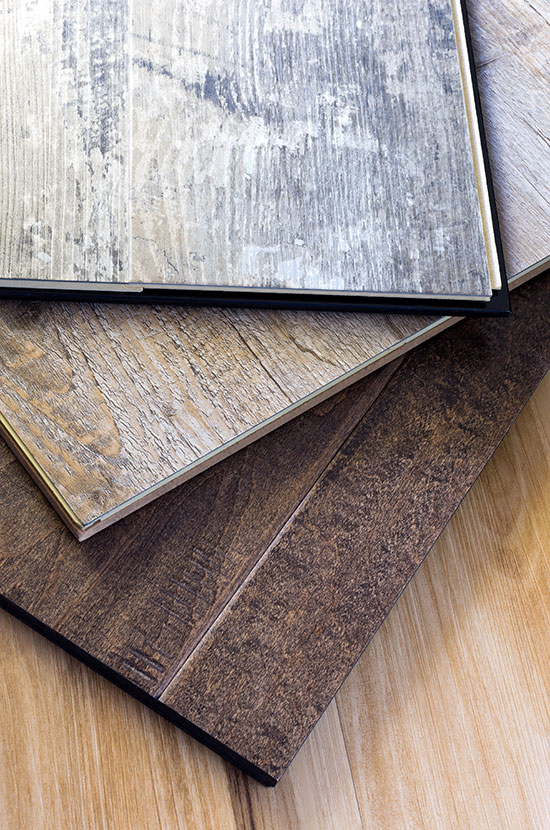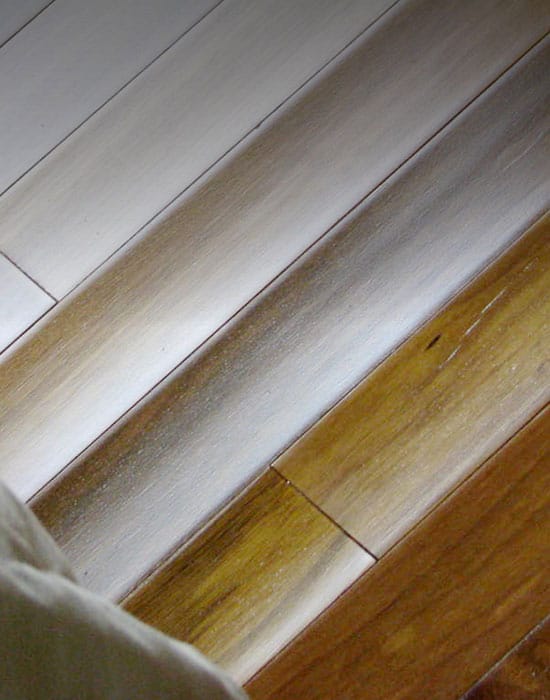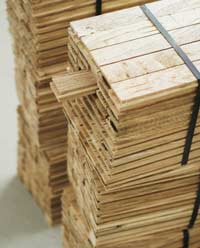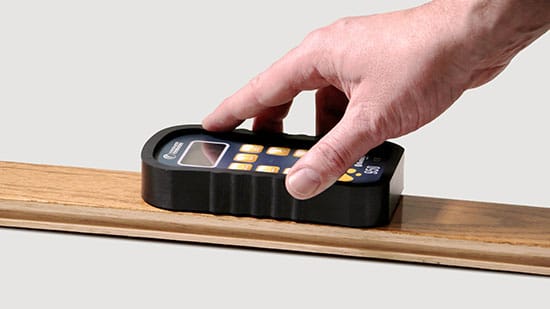Acclimating Engineered Hardwood Flooring—Why It’s Important

Engineered hardwood flooring is beautiful and more resistant to changes in temperature, but that doesn’t mean you shouldn’t take the time to acclimate it.
Note: To ensure desired flooring performance, please reference your specific manufacturer’s recommendations for relative humidity and temperature requirements. Not all wood products are designed to perform outside of their intended moisture content range.
Before engineered flooring can be installed, it must be at or close to the equilibrium moisture content (EMC) to avoid moisture-related failures like cupping, crowning, or warping.
But before that point can be reached, wood planks must either be dried to that point or acclimated at the installation location.
Acclimation, while important, can take a considerable amount of time—months even—if the wood’s moisture content (MC) is very different from the EMC of the location.
So, how can you shorten acclimation to give your client a reasonable timeline while still guaranteeing a quality installation?
This article will answer that question and provide some crucial tips for acclimation.
Specifically, we will talk about:
- Why and when you should measure MC in your engineered floors to save yourself time during the installation process
- Acclimation best practices
But first, let’s answer the question you might be thinking of…
Does Engineered Hardwood Need to Acclimate?
The short answer is absolutely.
Engineered hardwood floors should acclimate for a minimum of 48 hours before installation, according to most manufacturers.
While engineered wood floors are designed to better withstand changes in temperature and humidity than solid hardwood floors, these floors still need to be close to the EMC of the installation location.
However, the amount of time required for acclimation depends on the MC of the wood.
This can be influenced by:
- Seasonal changes
- The species of the wood
- Climate conditions of the job site
- Whether or not the installation site is enclosed and has the HVAC running
Because so many factors can influence the MC of the wood, it’s important to accurately measure the MC before, during, and after installation.
This brings us to our next point.
Why and When Should You Measure the MC in Your Engineered Floors?

Cupping is unsightly. Avoid it completely by minding the moisture content of your wood flooring.
Measuring the MC of engineered hardwood may be the key to shortening your acclimation time.
Imagine this scenario:
You receive a shipment of wood, and without checking it, you let it sit at the installation site for 48 hours.
You install the floors, and a few weeks later, your client complains about warping hardwood floors.
What went wrong?
Well, if the wood planks had a high MC when you received them—perhaps due to temperature swings, improper storage, or shipping complications—letting them sit at the acclimation site for 48 hours didn’t do much.
Acclimating the wood could take weeks or months without any other drying interventions depending on how wet the planks are.
So how do you solve this problem?
The key is to accurately measure the MC of the planks even before you unload the shipment.
With a pinless moisture meter like one from the Orion line at Wagner Meters, you can quickly and nondestructively measure the MC of a large amount of wood.
When the flooring shipment arrives, use a pinless moisture meter to measure the MC of several of the planks. Then, ask yourself, “Does the MC of these planks match the EMC of the final installation location?”
If yes, you should be in good shape to unload and place the shipment at the site.
If the answer is no and the MC is several percentage points away from the EMC, you are probably better off returning the shipment and requesting drier wood.
If the answer is no and the MC is just a few percentage points away from the EMC, it may be less hassle to unload and prepare the shipment for acclimation.
Even if the MC of the wood isn’t at the EMC when you measure it initially, you can use acclimation best practices to make sure the wood acclimates as quickly as possible.
Acclimation Best Practices
Acclimation done right can save you the headache of remediating moisture-related flooring failures in the future, so let’s look at some key steps.
Have an Effective Acclimation Setup

Practice acclimation best practices by stacking your planks so air can flow between them.
Once the wood shipment arrives, setting it up properly will help it acclimate more quickly to the EMC of the location.
For starters, unpack the wood.
While this seems simple, removing the wood from the boxes and cutting the plastic open will allow the wood to acclimate.
Next, rather than leaving the wood stacked one on top of the other, spread the wood out and stack the boards with spacers between each plank. This will improve airflow, which will also help with acclimation.
Measure the Moisture Condition of the Subfloor
If your subfloor—whether wood or concrete—is still wet, then it doesn’t matter how acclimated your wood flooring is. You’ll probably still have a moisture-related flooring failure.
Be sure to use either a wood moisture meter—if the subfloor is wood—or an in situ relative humidity testing method—if the subfloor is concrete. This will guarantee that your acclimated wood floors don’t absorb excess moisture from the subfloor.
Measure the MC of the Wood…Often

An Orion pinless moisture meter can help you be 100% sure that your floor is ready for installation.
How are you supposed to know whether the wood is acclimated if you aren’t measuring it frequently?
Use a pinless meter to regularly measure the MC of the wood planks. Not only will you know when the floor is ready for installation, but you will also be able to give your client a rough timeline based on the MC of the flooring.
Enclose the Building
If the installation location is enclosed, you can spread the wood out without worrying about it being exposed to the elements.
Ensure Drainage Runs Away from the Building
Ensure grading is completed and the drainage runs away from the building. Proper drainage will prevent water from pooling anywhere and impacting the moisture condition of the subfloor.
If the subfloor moisture condition is affected, it will eventually cause moisture problems for the wood flooring.
Complete Wet Construction Elements
Wet construction elements, including paint, release moisture as they dry. When they do so, the wood may absorb that moisture and increase the MC.
Install and Run the AC and Heating Systems
When the AC and heating systems have been running, you can be confident that the temperature and humidity of the installation location are stable, which is crucial for proper wood acclimation.
Running these systems for at least five days before the wood shipment’s arrival will best prepare the installation site.
Don’t Run the Risk of Ruined Floors
At the end of the day, you won’t know with certainty when your flooring is acclimated and ready for installation without a reliable moisture meter.
Don’t put your reputation—and your client’s floors—at risk.
Shorten acclimation times and make informed decisions by using a pinless moisture meter. The award-winning line of Orion meters from Wagner Meters provides some excellent choices.
Previously published in Hardwood Floors magazine.
Related Posts via Taxonomies
Last updated on November 18th, 2022



